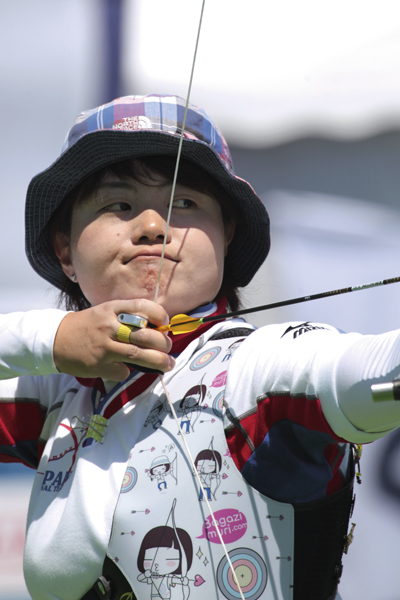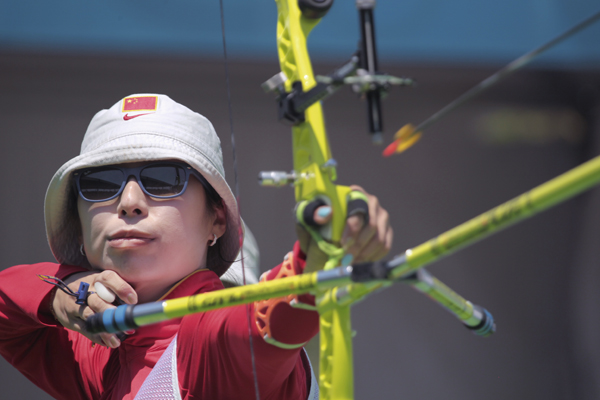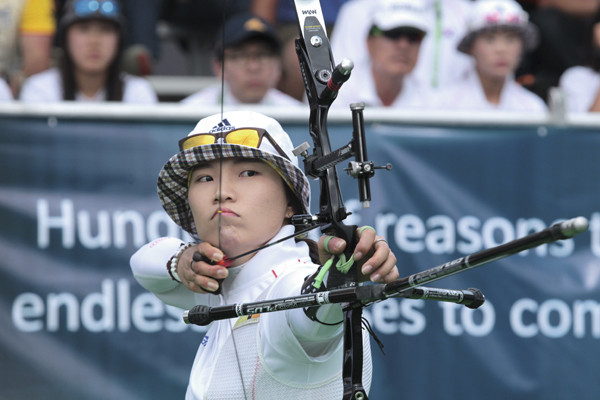Craig Johnson outlines how and why bad habits can form, and what to do to break them
In other features I’ve given an overview of the nervous system, motor feedback and motor learning. This article will examine some of the issues that can arise when incorrect learning occurs, and will conclude with a few words for coaches.
The motor system learns by repetition and is just as capable of learning bad habits as good ones. When training, it is essential to ensure that the best form possible is used all the time in order that this becomes an integral part of the motor program and no bad habits creep in. When bad habits do become learned, they are difficult to correct because they have become part of the motor program and everything feels natural, but the shot progresses incorrectly. There are several ways to correct faulty motor programs. Many involve changing the direction of the motor program by inserting a new association and linking this into the existing program. For example, if an archer’s forward shoulder persistently hunches as the draw progresses, it can be very difficult to get this movement out of the motor program. If the draw is practised in isolation until it is correct, it can then be linked to a mental association and the association used to correct the motor program. Again, using the example of the hunching shoulder, once the correct draw technique has been perfected in isolation, the archer can be taught to momentarily focus on their shoulder prior to performing this corrected draw. This can then be inserted into the motor program as a whole by performing the entire shot, but focusing on the shoulder at the end of the pre-draw, making it easier to perform the draw in the corrected way as part of the overall shot. Once the archer is capable of performing the shot correctly, repeated practice will make the new (correct) motor program progressively easier to perform. The corrected shot will eventually feel natural and be easy to perform. The archer may be left with a shoulder focus at the end of the pre-draw, or this may fade over time.

Errors can creep into any part of the shot, but the release is the most technically difficult as it requires the co-ordination of many different body parts
Target Panic
The loose is the most complex part of the shot and the most difficult to get consistently correct. It involves the coordinated activity of many parts of the body and in order to be properly carried out, it should be almost completely unconscious. Many archers talk about the loose coming as a surprise and this reflects the extent to which the conscious mind should have passed control to the automatic motor controller at this point in the shot. The concept of having the least conscious control over the point that is the focus of the whole shot is difficult to teach and perform, and becomes more so as the pressures of competition and expectations to do well increase.
Target panic describes a spectrum of problems, but it most often happens when the shot is loosed too early in the execution of the motor program. It seems that the conscious mind takes over the loose in response to some kind of stimulus, most commonly the first appearance of the gold in the sight window, or the sound of the clicker. Once this has occurred, it becomes easier for it to happen on the next shot and progressively easier and easier. After a few shots it becomes impossible for the archer to break out of this new and incorrect motor program, and their performance deteriorates markedly.
Target panic is a very serious problem and one that can be difficult to deal with. It is really important that anyone suffering from this incorrect learning seeks the help of a good coach as soon as possible in order to help them to correct their form and shoot properly again.

Top archers will say their loose comes as a surprise, because they have little conscious involvement with it
Thoughts for coaches
Understanding the principles of motor physiology and especially motor learning can lead to improvements in coaching as well as shooting. The following are three of the many areas in which coaches can use this understanding to improve their teaching.
- Positive encouragement: This is always the best teacher of a motivated student and is even more powerful if it can be applied immediately after a shot while the archer is updating their motor programs. Try to catch the archer executing well and deliver a short and specific positive comment, such as, ‘that was a really nice follow through’, immediately after the shot. This will focus the archer’s attention to this aspect of the shot and will increase its incorporation into their motor programs.
- Highlighting poor form: Pointing out poor form is important, but it is always better to do this a little time after the shot. ‘Go and collect your arrows and then let’s talk about how its going’, can be a really useful opener to pointing out a problem and will ensure that the archer doesn’t focus on a fault in their form while updating their motor program. When discussing or demonstrating a problem, its fine to tell and even demonstrate to the archer what they were doing wrong, but much more time and emphasis should always be placed on the correct way to carry out the shot so that the archer is left with a clear impression of what to practice and add to their motor program.
- Documenting improvement: Most routine training sessions should end with a period of shooting during which the archer is not coached and scores are recorded. Archers at all levels (and their coaches) like to see improvement and documenting this is a really good way to maintain motivation. In addition, for beginner and intermediate archers, this practice will begin to enforce the difference between training and competition shooting and give the archers an opportunity to practise the unconscious control that leads to the most consistent form. ⁄



I’ve read a couple of Bow International’s articles and always find them most informative. Keep up the good work.
Thanks for helpful articles on coaching approaches, form technique and mental toughness.